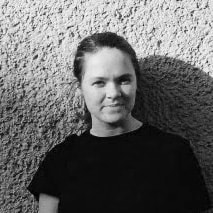Fall Tour Day 2021: Cabin Culture! – A Virtual Road Trip – Sunday, October 10, 2021; 1:30pm CDT
|
|
Pack the station wagons and plan your picnics! Docomomo US/MN is headed on a (virtual) road trip to celebrate Resort and Cabin Culture, the mainstays of Mid-Century Travel and Leisure across the midwest. We will be covering hundreds of miles across Minnesota and Wisconsin to feature vacation properties designed by Close Associates, Ralph Rapson, Milo Thompson, Bruce Abrahamson and more. All from the comfort of your own home (or cabin)! Sunday, October 10; 1:30pm CDT |
|
For the past one hundred years, “cabin culture” has become a dominant trait of Minnesotan identity. For many people growing up in Minnesota, remembering a childhood “up north” conjures pleasant images of pine-ringed lakes and a cozy cabin. The phenomenon of owning or visiting a cabin in the upper midwest is widespread and did not happen by accident. Cabin culture is the byproduct of industrial pursuits, the goal of postwar regional boosters, and, every so often, the precise conditions for exceptional modern architecture. This study highlights modernist projects that represent different ideas in cabin culture. The modernist cabin provides access to nature, and, through historic context, demonstrates ideas about gathering and the environment. This study traces modernism through cabin architecture to highlight locations from the Docomomo US/MN Minnesota Modern Registry. - Mary Dahlman Begley |
Featured Properties: |
|
Naniboujou Club Lodge; Grand Marais, MN. 1928-29 The design is a mashup of Art Deco, polygonal towers, cedar shakes, a gambrel roof pierced by dormers, with Indigenous (Cree) influence; the interior is a riot of Art Deco color. Located near the mouth of the Brule river to Lake Superior, the Naniboujou Club Lodge exists today (in excellent condition) as it first opened in 1929 – four months before the stock market crashed. |
|
Skywater Cabins: Close Associates; Osceola, WI. 1941, 1961 The original sod roof cabin was designed in 1941 for writer Dagmar Doneghy Beach and Joseph Warren Beach, head of the U of M English Department. Dagmar named the site "Skywater" for its position on a bluff overlooking the river and its constant reflections of the sky. Lisl Close designed a second cabin for the site in 1961, it is a light-frame cantilevered structure sticking up from the hill. Lisl and Win acquired the property in the early 1980s, and the cabins are still in use by the Close families. |
|
Thunderhead: Lisl Close; Cook, MN. 1959 Built for U of M General College professor Jerry Hill, the cabin on the north shore of Lake Vermilion is only accessible by boat (or by boot, in the winter months). Lisl Close first developed a plan in 1941 for the cabin she called "Thunderhead," and revised the design continuously until it was eventually built between 1957 and 1959. |
|
Four Cabins: James Stageberg, Leonard Parker, Bruce Abrahamson, and John Rauma; Barnes, WI. 1970 Built for their own families by four outstanding MN Modern architects (and friendly competitors!), the Four Cabins are located on shared property along a sandy beach of Upper Eau Claire Lake. The Four Cabins were all built by contractor Chet Lambert using similar materials and stock Pella sliding doors. Though the material exteriors are unified, the designs of the individual cabins spotlight each architect's style and family requirements at the time. |
|
Glass Cube: Ralph and Mary Rapson; Amery, WI. 1974 Among all of Ralph Rapson’s designs, the Glass Cube may reveal a most intimate understanding of his person. The clients for this project are Mary and Ralph; and the challenge is siting this cabin and choosing the view. |
|
Milo H. Thompson Cabin; Deerwood, MN. 1977 In a 1979 interview, architect Milo Thompson mentioned the roots of his post-modern cabin came from "Norwegian stave churches, French chateaus, Harvard's Memorial Hall, Wright's Lake Tahoe cottages and north woods cabins." With five stories of inhabitable space and a towering chimney, this cabin – in true post-modernist form – declares boldly that it is prepared to outshine the surrounding forest. Even so, it is visible only in the winter months, after the trees surrender their cover. |
Presenters Include:
|
Mary Dahlman Begley
Mary received her Master of Architecture degree from the University of Minnesota in 2020 after completing her BA at Carleton College in 2014. Since early 2020, Mary has been conducting thematic and site-specific research supporting the Docomomo US/MN Minnesota Modern Registry. She is currently a visiting instructor at SDSU, Department of Architecture. More at www.marydbegley.com. |
|
Bobak Ha'Eri
Bobak is a board member of Docomomo US/MN; and the human encyclopedia behind the MN Modern Registry. He holds a BA from the University of Southern California and a JD from the University of Minnesota, where he's currently an Adjunct Professor for the University Honors Program and Instructor of Legal Practice at the Law School. |
Hosted By:
|
Jon Rusch
Jon is a board member of Docomomo US/MN and works as a preservation planner and historian of cities, buildings, and landscapes. Originally from South Dakota, he first moved moved to Minneapolis to attend the University of Minnesota. After a decade away, Jon recently returned to Minnesota after earning an M.A. in historic preservation from Cornell University and spending time in the Bay Area, where he cut his teeth on historical evaluation, environmental compliance, and planning projects dealing with mid-20th-century resources. Jon continues to work for West Coast consulting firm ICF. |
















